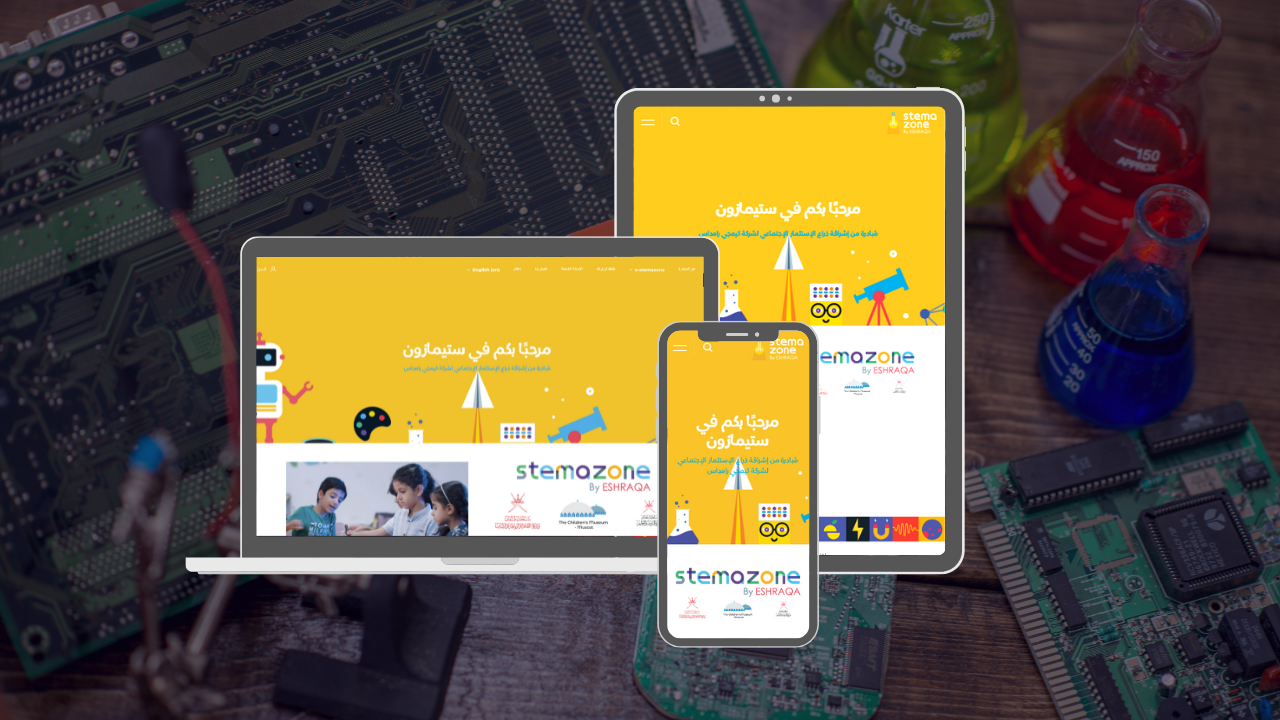Let us know what type of content you'd like to see more of. Fill out our three question survey.
Emerging eLearning Series: Innovative Success for Children—A Look Into Oman’s Stemazone Initiative
This post is one of a series of posts on Emerging eLearning.
Jun 27, 2022
This is the first post in a series that seeks to capture e-learning efforts, celebrate innovations, consider critical lessons learned, and support practitioners who do this work.
Introducing Children to STEAM Content via eLearning
The stemazone initiative for young Omanis—funded by the private foundation Eshraqa and designed by DAI—was intended to be cutting edge. Science, technology, engineering, arts, and math (STEAM) education is considered fundamental to support the development of a knowledge economy, something that the Sultanate of Oman has prioritized for the coming years. Designed to encourage children and young adults to get directly involved in STEAM activities, this project originally had a detailed plan to carry out in-person, hands-on workshops for youth. With widespread restrictions on people gathering in 2020 during the pandemic, the project had to pivot quickly.
The main challenge was to transform that in-person experience into a virtual one, in a very short timeframe, with an exceptional level of quality as the first program of its type in Oman. When DAI’s Sustainable Business Group shared this idea with the Center for Digital Acceleration team, the ideas began to flow. In approximately six months, a platform with cutting-edge, culturally appropriate content went live. It is now an award-winning learning environment that continues to be actively used by Omani teachers and learners.
This was not an easy process. Our team went through significant trial and error to launch, improve, and maintain the site and its content. Eighteen months after launch, we have some lessons to share.
What to Consider
The following points were key elements of our success in creating a remote learning environment to support STEAM learning experiences, using Moodle as the learning management system (LMS).
1. Keep it accessible, with comprehensive tracking
User experience is key to success for eLearning, especially for children. As adults, we are often dazzled by futuristic, fancy, or complex interfaces, when the target audience might need something simpler. For the stemazone project, significant time and effort went into determining the right balance. For example, it was important for the platform to capture intake information on students, but the reality is that children are not necessarily able to answer comprehensive demographic information. Finding the right fit there took multiple iterations and testing.
Additionally, eLearning is more than just the content a user engages with, such as well-produced videos or pedagogically appropriate lessons. For example, it’s important for all eLearning content to be SCORM (Shareable Content Object Reference Model) compliant. When content is SCORM compliant, it allows project managers to more easily track and manage data to understand how well the online courses are working.
2. Scalable and secure infrastructure
Stemazone serves students, children, and young people nationwide in Oman. Through a partnership with a local information technology (IT) provider, we were able to ensure high availability of content, a quick connection to servers, and flexible infrastructure to respond to spikes in platform demand. The level of security in data and system access should never be underestimated, and it’s important to consider, for example, the implementation of security layers such as two-factor authentication.
3. Consider different modalities of STEAM learning as complementary and additive
While the digital stemazone platform was created in response to pandemic restrictions, a hybrid program generated more engagement among learners. STEAM education in particular is highly tactile, based on building and experimentation. Having step-by-step guidance at home, and participating in some in-person activities, allow learners to experience the best of both worlds.
Therefore, different types of partnerships may be necessary to successfully implement these different types of modalities. For example, working with the Omani Ministry of Education has been crucial for this hybrid transition, strategically complementary work done in partnership with the Oman Children’s Museum and the Omani Ministry of Culture, Sports, and Youth.

Image: DAI
Transformative Vision
A year after it was launched, the stemazone eLearning initiative was a big winner at the Future Skills and Human Resources Development Conference 2021 in Muscat, Oman. The Arabian Research Bureau ARB/OITE presented awards to Eshraqa—the social development arm of Omani conglomerate Khimji Ramdas—in three categories: “Future Technology,” “Robotics,” and “Best of the Best.” In 2022, stemazone will be part of a broader STEM learning ecosystem, continuing to support Oman’s young people and the productive future of the Sultanate of Oman.